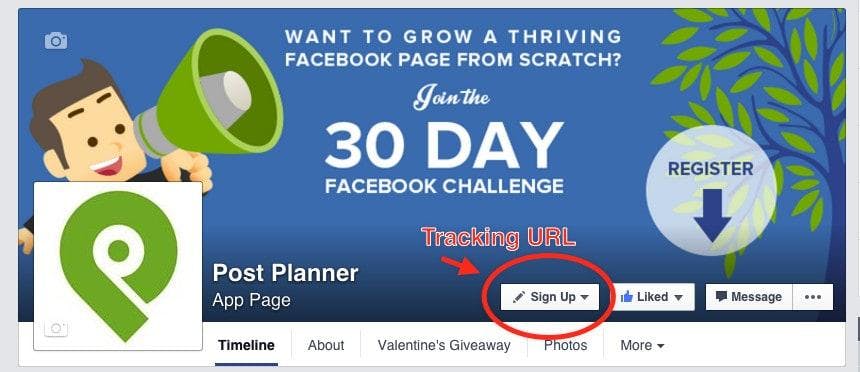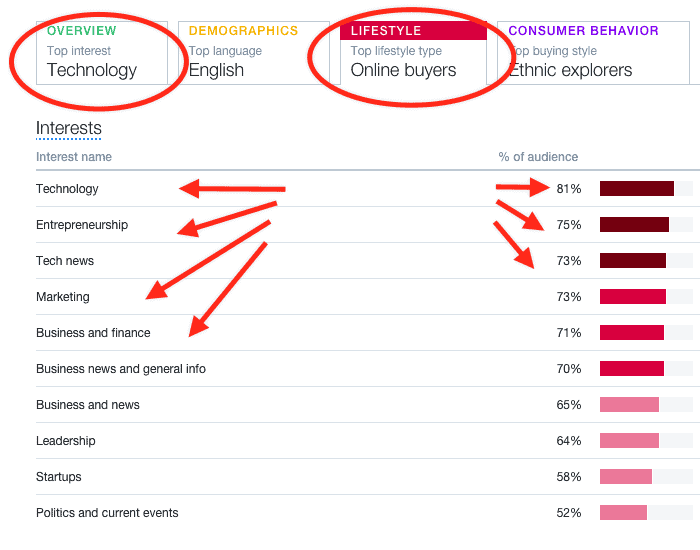Do you want to improve your social media results?Looking for ways to better understand your audience?The key is being data informed.Sound scary?It doesn't have to be.In fact, it can be simple, rewarding and enlightening. Believe it or not, knowing what your audience wants unlocks opportunity.Not only does it lead to increased connections, but also conversations and conversions.How so?When you're armed with the right information, you can make informed decisions.Rather than throwing content at a wall and hoping it sticks, you analyze the data. Then you temper that with experience and insight.What do I mean by this? Andrew Chen explains it this way,"Being data-informed means that you acknowledge the fact that you only have a small subset of the information that you need to build a successful product. ...The difference between data-informed versus data-driven, in my mind, is that you weigh the data as one piece of a messy problem you’re solving with thousands of constantly changing variables. While data is concrete, it is often systematically biased."In other words, culling through the data and charting your course based on that isn't enough. You must prove your hypothesis with measured learnings.Then add in previous experience to determine what performed, what didn't and what you can refine.Because knowing that is your sweet spot. Now you can post the right content to the right people. No more making "smart" guesses.Instead, you make data-backed social media decisions.Chances are though, you're still struggling to analyze what's happening on social media.But here’s the good news. If you know what to look for, and you use the right tools, you can tap into a treasure trove of valuable information.Today, I’m sharing 3 specific techniques you can use to be data-informed (and driven) in your social media efforts.
How to Improve Social Media Results With Data
1. Combine Google and Facebook for Detailed Website Analytics
Does Google Analytics make you sweat a bit just thinking about it?It doesn't have to.In fact, creating campaigns in Google analytics is easier than you think. And even more effective when combined with Facebook.Together, they can offer detailed data about actions your visitors/fans are taking.For example, how did they land on your website? What link did they click?We track this daily at Post Planner and I do as well here on my blog. How do we do it, and how can you too?Through UTM parameters.Not familiar with UTM tracking?Simply put - it's an easy way for you to see exactly what actions your fans (or anyone for that matter) are taking.They're an invaluable and necessary addition to your marketing efforts. So, if you haven't been using them, now is the time.When you combine UTM tags with Facebook, you tap into unique insights into the behavior of your fans.For example, use a tracking URL to track clicks from a specific tab on your Facebook page to your website.
Here’s how you do this:
- Add the URL to your Facebook cover, Call to Action button, a post or anywhere else you're adding links.
- For example, you can add your tracking URL to the Call to Action button that leads to your latest product, service or campaign. In our instance, we are tracking clicks to our Facebook 30 Day Challenge.

- The beauty in this is the data received when someone clicks on that link. We can now see exactly where they came from and how the ended up on the landing page.
How will this help you?Imagine knowing what content your Facebook fans are clicking on? This let's you make better decisions.Rather than hoping for an outcome, you predict the content your fans will respond to. Then you can design content around their needs, wants and desires.You can also move content around (or off your page altogether) dependent on how it performs.
Pro Tip from Kristi Hines:
The main thing to remember with custom campaign UTM parameters is that the parameters must be exact. If you use Facebook, facebook, and facebook.com as utm sources, they will show up as three different sources in Google Analytics.The same goes for Campaigns: If you use "Website" and "website" you will have two separate campaigns. Again: Every parameter must be exactly the same before it can track and report accurately.
2. Use Twitter Data to Get Inside the Head of Your Consumer
Want to get inside the head of your audience? Look to your Twitter Analytics!Twitter data is an excellent resource when trying to determine:
- What content is resonating with your community
- Your followers level of awareness around your product/service
- How to best tailor your campaigns to meet their needs
- and so much more!
Look to Twitter Analytics to See:
- Impressions
- Mentions
- Tweets linking to you
- Which tweets earned you the most bang for your Twitter buck.
This data will show you what content your audience is responding to. And most important - how to begin tailoring tweets for that specific audience.Let's take a look at a real-time example.Hop on over to Twitter Analytics. Haven't taken a gander lately?It's a wealth of information. Whether you're looking for industry, interests, gender, or income - you'll find the answer here.Under the "audience" tab, you can make your way to "lifestyle." It might surprise you to see what's on this list.

For me, I would have thought marketing would have made the top of the list. Instead, technology sits up top.Armed with this information, I can adjust the type of content I'm sharing.And that type of data pays off.

Use Twitter to Track Supporters
Another area that can be quite valuable dependent on your business is promoter analysis.You can use tools to dive into who your biggest supporters are.

Each will show you who is sharing your content and how often. You can also get to know them by retweeting or replying.As we all know, building relationships is the name of the game in social media.No matter the size of your company, opening up lines of communication is critical.And just as important is saying thank you to those who are actively promoting your content.Once you create that bridge, gaining trust and earning loyalty will be much easier.
3. Measure the Direct ROI of Your Social Media Messages
We’ve all heard it before.There’s no way to determine the ROI of your social media efforts.And while it might need complex tracking, it is possible. And with less work than you think.That’s where testing comes in.One area you can test is whether social media impacts traffic to your website.
Here’s how you can do this:
- Pick your time frame. (e.g. how long will your campaign run?)
- Identify your goals. (e.g. how many new contacts and/or downloads)
- Create a campaign that attracts your exact target audience.
- Determine what your asset will look like. (e.g. Infographic, e-book, webinar)
- Identify the benefit to your audience. What will make them want to click?
- Go back to the first tip and use Custom URL Parameters to measure the effectiveness of your campaign.
- You will create a custom tracking URL for all social networks you share your campaign across. This means one for Facebook, Twitter, Google Plus, Instagram, etc.
- Promote the campaign on your social media channels using the custom link for each network.
- Pay attention to the economic impact. (what messages brought people to your site)
- Analyze your data, refine your strategy!
Final Thoughts
Social media has opened the door to greater communication between businesses and consumers. But it hasn't come without a price.Finding the balance between engagement and conversion is a problem most companies face.That's where your analytics come in. Track the metrics that matter to your company.Put a system in place to consistently monitor and then analyze. I promise you, if you're focusing on the right information, the data won't lie.Not only that, but it will keep you honest and point you in the right direction.Rather than making spur of the moment, emotionally charged decisions, you qualify them with sound judgement.Take one step and get started today.
About Rebekah Radice
Rebekah Radice, co-founder of BRIL.LA, has traded narcissism for purpose. When not driving growth, you'll find her tricking family into thinking she's Emeril Lagasse - likely covered in marinara. The spotlight was fun, but impact is better. These days she's using 20+ years of brand brilliance for good.
